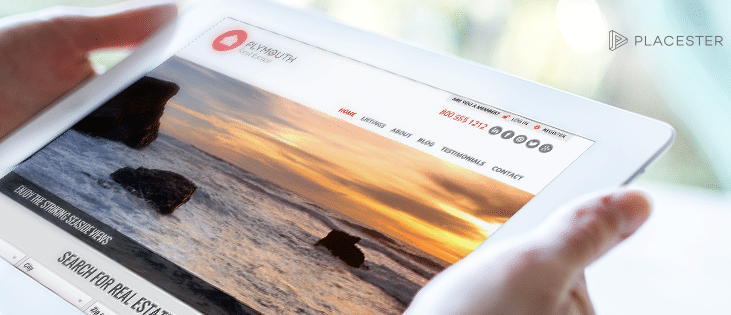
Everything we offer has been designed with the needs of agents and brokers in mind. I mean that broadly. Everything from our underlying technology to how we provide support has been tailored to the unique requirements of the real estate industry, and to address the fact that many of the people who work in that industry are new to digital marketing.
Two examples: 1) Our website technology supports IDX, the system that allows realtors to show MLS property listings on their websites (MLS is the lifeblood of the industry). 2) Our Placester Plays walks users, step by step, through activities like setting up a Facebook page and buying ads on Google.
IT to our employees is equally important
Placester currently has offices in Boston and Chicago. When it comes to IT on the back end, my goal has always been to give our employees the same kind of well-thought-out digital tools that we provide to our customers.
That’s why we use Google Apps for Work and RingCentral.
Both solutions on their own would meet my requirements, but it is the integration between them made this combination an easy decision for me. I’ll say more about that in a moment.
First, let me give you a little of our history. Although we’ve been with Google from the start, RingCentral wasn’t our first phone solution. The original one couldn’t reliably handle what seemed to me like basic requirements for a phone system, such as integration with a user’s contacts and conference calling. I used RingCentral at previous companies, so I knew their technology worked. It sounds like a small thing, but to me, it’s not.
Better – and simpler – than the sum of the parts
About the time I had reached the end of my rope with our original phone system, RingCentral was announcing deeper integrations into Google. That validated my decision to switch to RingCentral.
There are a couple of different explanations of why the integration with Google is so important. The obvious one, I suppose, it that employees can be much more productive when they don’t have to switch from application to application as they do their work. For example, our employees schedule RingCentral online meetings and audio conferences from within Google Calendar. They invite participants to a Google Hangouts session using RingCentral conferencing.
But here’s a different reason why I value the integration. Our team doesn’t like to have a whole bunch of tools. Often when I add some new functionality, even something I think will really be useful, for them it’s just more to think about and remember.
The integration of RingCentral and Google Apps for Work is a way of providing them with a lot of functionality without seeming to inundate them with tools. I can help them be more productive, while staying true to their preference for fewer tools.
For me, RingCentral and Google Apps for Work are what I want for back-end IT – well-thought-out solutions that work flawlessly behind the scenes to help our employees be as productive as possible. Just like what we do for real estate agents.
Originally published Nov 30, 2016, updated Sep 18, 2021


